In our solar system, the inter-planetary region has chunks of matter ( much smaller in size compared to planets) called asteroids. They
will not move around the sun, since they have very small masses compared to the sun
will move in an irregular way because of their small masses and will drift away into outer space
will move around the sun in closed orbits but not obey Kepler's laws
will move in orbits like planets and obey Kepler's law
The correct Answer is:D
Asteroids are also being acted upon by central gravitational forces, hence they are moving in circular orbits like planets and obey Kepler's laws.
Topper's Solved these Questions
- GRAVITATIONBook:DC PANDEY ENGLISHChapter:GRAVITATIONExercise:(B) Chapter Exercises
Explore 31 Videos
- GRAVITATIONBook:DC PANDEY ENGLISHChapter:GRAVITATIONExercise:(C) Chapter Exercises
Explore 45 Videos
- GRAVITATIONBook:DC PANDEY ENGLISHChapter:GRAVITATIONExercise:Check Point 10.6
Explore 20 Videos
- GENERAL PHYSICSBook:DC PANDEY ENGLISHChapter:GENERAL PHYSICSExercise:INTEGER_TYPE
Explore 2 Videos
- KINEMATICSBook:DC PANDEY ENGLISHChapter:KINEMATICSExercise:INTEGER_TYPE
Explore 10 Videos
Similar Questions
$ solar system has 15 planets.
! Earth is the major member of the solar system
View SolutionIn an imaginary planetary system, the central star has the same mass as our sun, but is much brighter so that only a planet twice the distance between the earth and the sun can support life. Assuming biological evolution ( including aging process etc.) on that is similar to ours, what would be the average life span of a 'human' on that planet in terms of its natural year? The average life span of a human on the earth may be taken to be 70 years.
View Solution
Knowledge Check
In our solar system, the inter-planetery region has chunks of matter (much smaller in size compared to planets) called asteriods. They
Awill not move around the sun since they have very small masses compared to sun.Bwill move in an irregular way because of their small masses and will drift away into outer space.Cwill move around the sun in closed orbits but not obey Kepler's laws.Dwill move in orbits like planets and obey Kepler's laws.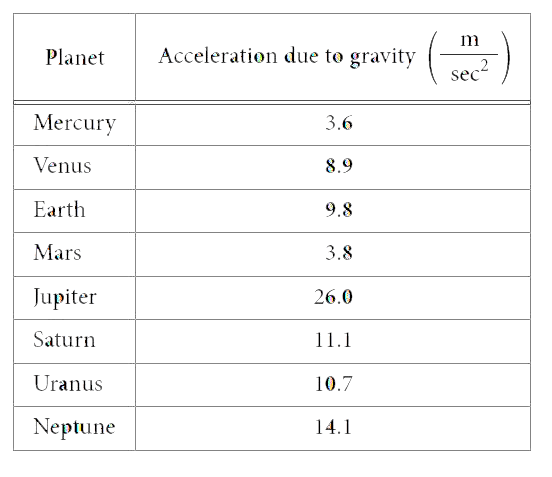
The chart above shows approximate of the acceleration due to gravity in meters per second squared (msec2) for the eight planets in our solar system. The weight of an object on a given planet can be found by using the formula W=mg, where W is the weight of the object measured in newtons, m is the of the object measured in kilograms, and g is the acceleration due to gravity on the planet measured in msec2.
An object on Earth has a weight of 150 newtons. On which planet would the same object have an approximate weight of 170 newtons?AvenusBsaturnCuranusDneptune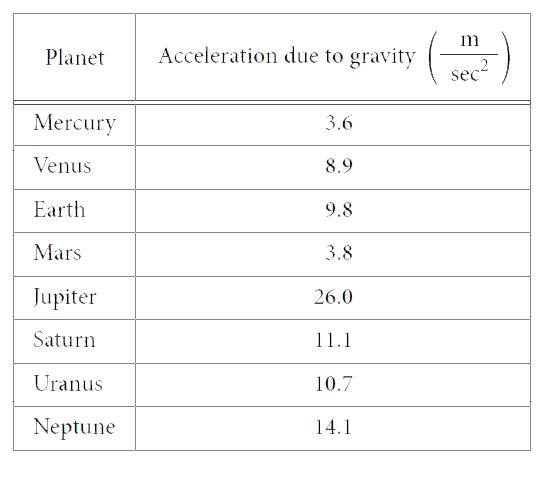
The chart above shows approximate of the acceleration due to gravity in meters per second squared (msec2) for the eight planets in our solar system. The weight of an object on a given planet can be found by using the formula W=mg, where W is the weight of the object measured in newtons, m is the of the object measured in kilograms, and g is the acceleration due to gravity on the planet measured in msec2.
What is the weight, in newtons, of an object on Mercury with a mass of 90 kilograms?A25B86C101D324
If accleration due to gravity on the surface of earth is 10ms−2 and let acceleration due to gravitational acceleration at surface of another planet of our solar system be 5ms−2 An astronaut weighing 50kg on earth goes to this planet in spaceship with a constant velcity The weight of the astronaut with time of fiight is roughly given by
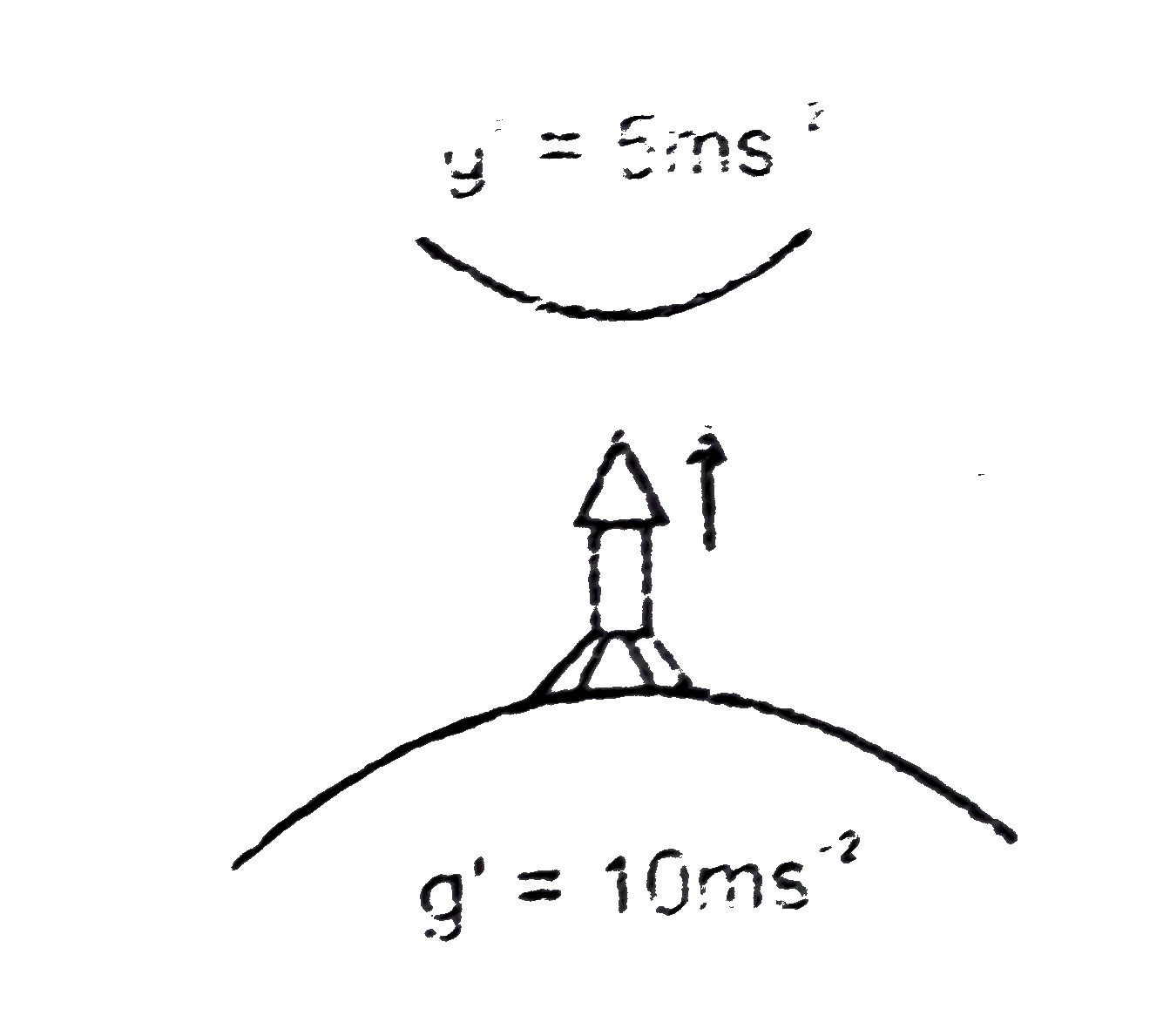 .
.
View SolutionThe nearest star from our solar system is 4.29 light year away. How much is this distance in terms of par sec? How much parallax would this star (named Alpha Centauri) show when viewed from two locations of the earth six months apart in its orbit around the sun?
View SolutionConsider a hypothetical solar system, which has two identical massive suns each of mass M and radius r, seperated by a seperation of 2√3R (centre to centre). (R gtgtgtr). These suns are always at rest. There is only one planet in this solar system having mass m. This planet is revolving in circular orbit of radius R such that centre of the orbit lies at the mid point of the line joining the centres of the sun and plane of the orbit is perpendicular to the line joining the centres of the sun. Whole situation is shown in the figure.

View SolutionConsider a hypothetical solar system, which has two identical massive suns each of mass M and radius r, seperated by a seperation of 2√3R (centre to centre). (R gtgtgtr). These suns are always at rest. There is only one planet in this solar system having mass m. This planet is revolving in circular orbit of radius R such that centre of the orbit lies at the mid point of the line joining the centres of the sun and plane of the orbit is perpendicular to the line joining the centres of the sun. Whole situation is shown in the figure.
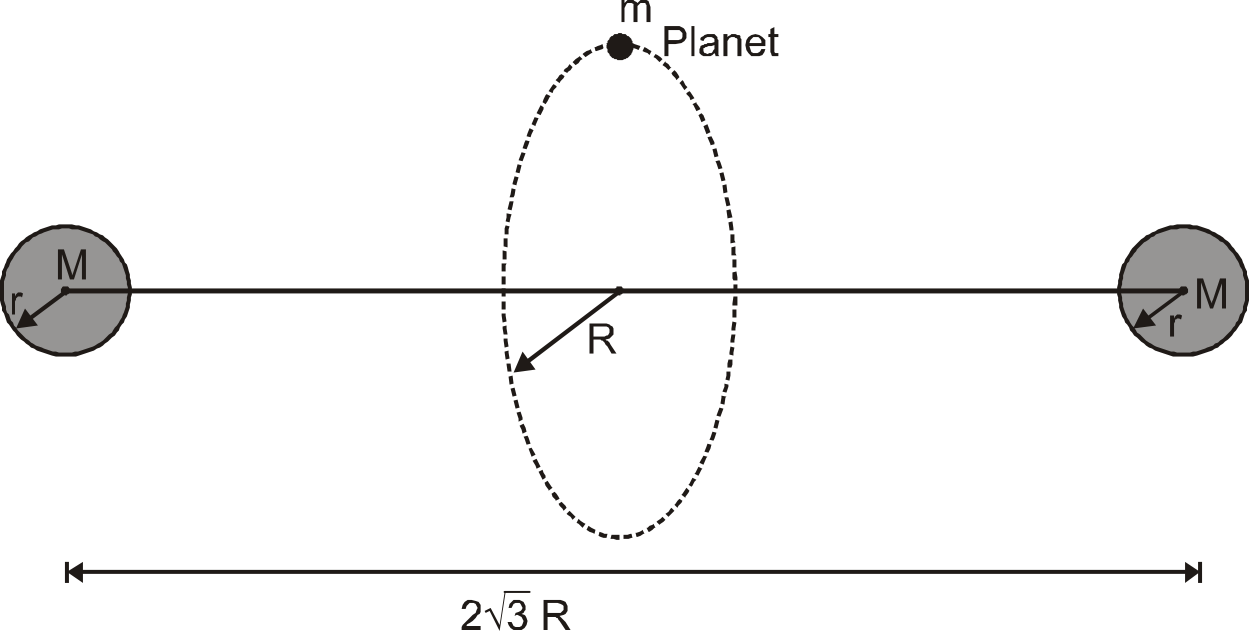
Q. Average force on the planet in half revolution is
View SolutionConsider a hypothetical solar system, which has two identical massive suns each of mass M and radius r, seperated by a seperation of 2√3R (centre to centre). (R>>r). These suns are always at rest. There is only one planet in this solar system having mass m. This planet is revolving in circular orbit of radius R such that centre of the orbit lies at the mid point of the line joining the centres of the sun and plane of the orbit is perpendicular to the line joining the centres of the sun. Whole situation is shown in the figure.
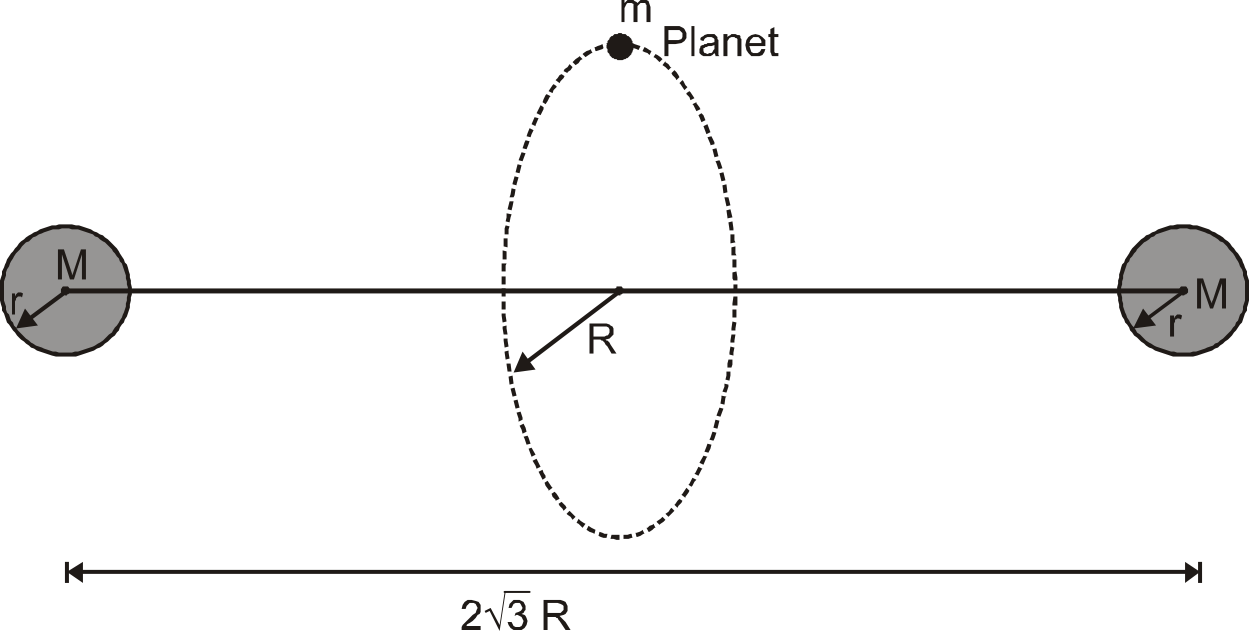
Q. Speed of the planet is
View Solution